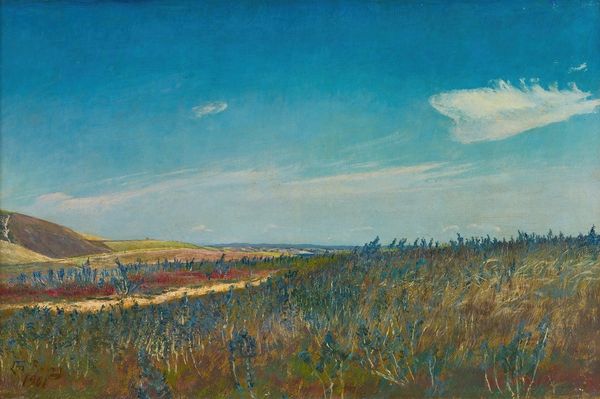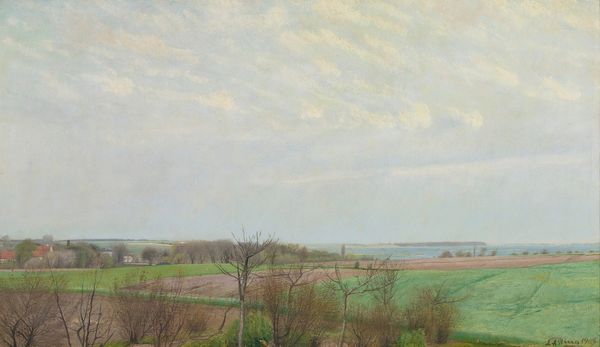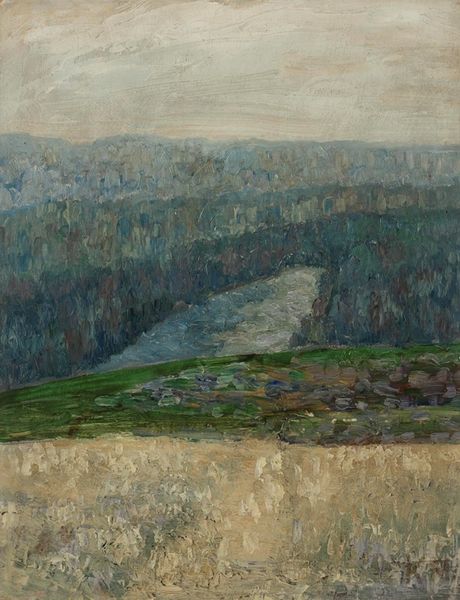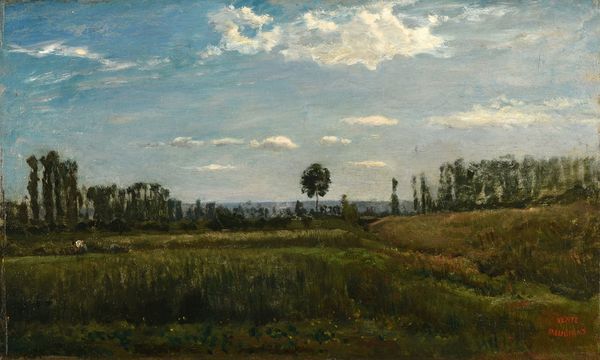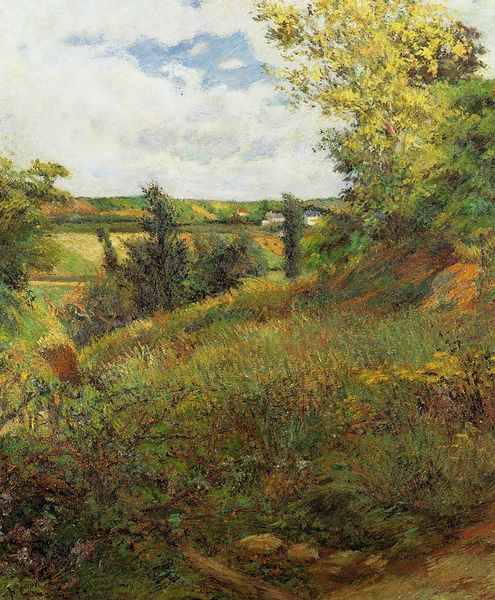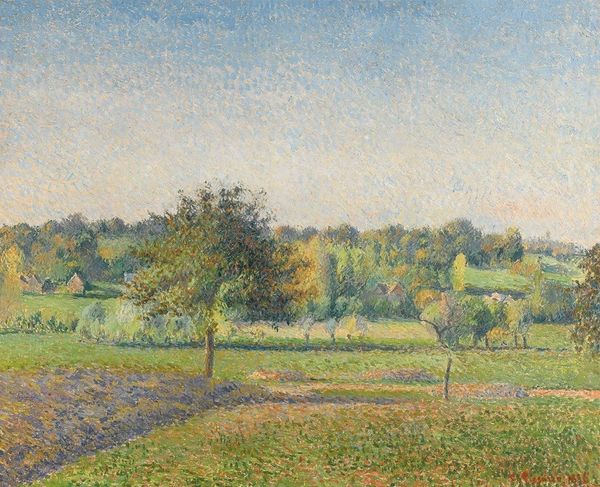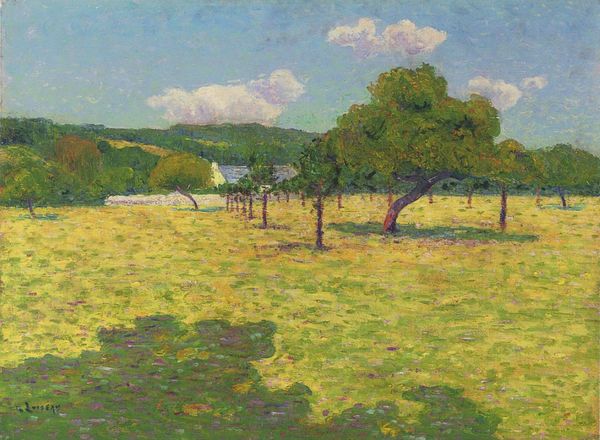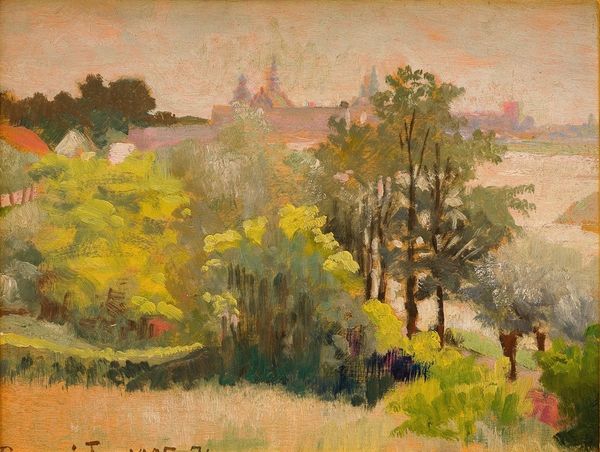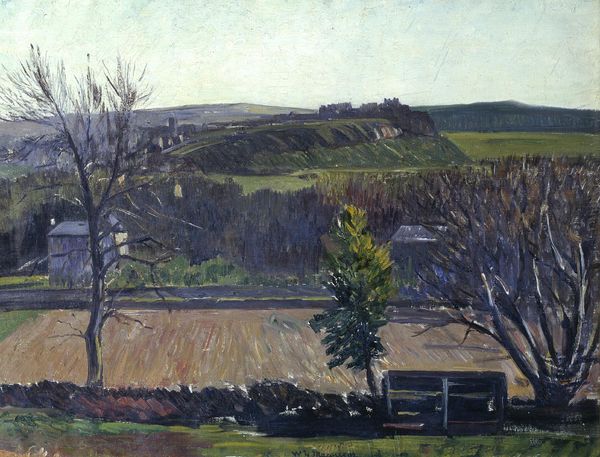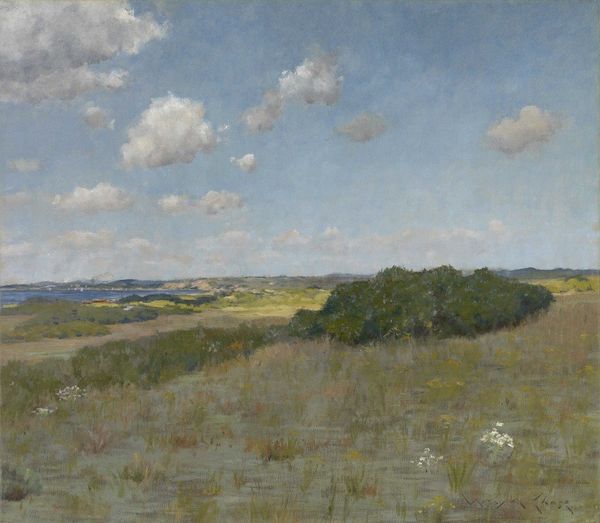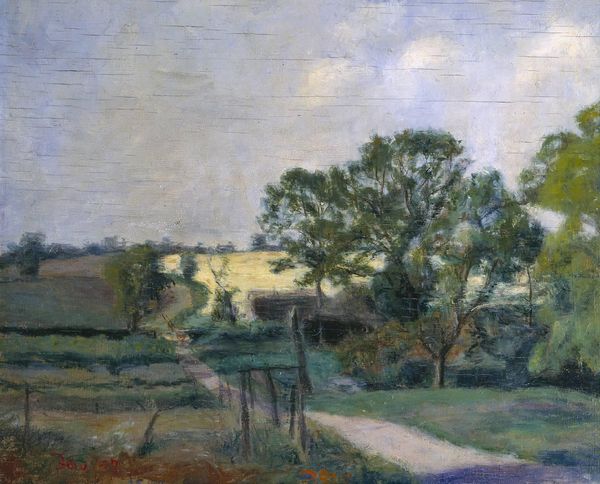
painting, plein-air, oil-paint
#
painting
#
impressionism
#
plein-air
#
oil-paint
#
landscape
#
impressionist landscape
#
figuration
#
nature
Copyright: Public Domain: Artvee
Curator: Welcome. Before us is Gustave Caillebotte’s "La Vallée de L’Yerres," painted in 1877. Editor: Immediately striking! That aerial perspective gives it a quiet, contemplative feel. Almost melancholic in its expanse, do you feel that? Curator: Perhaps. But look closely at how Caillebotte used plein-air techniques. It's less about sadness and more about capturing a specific moment—the textures of the trees, the fields. This focus connects it to a burgeoning interest in capturing real, observable labor happening within a very specific geography, the Yerres Valley. The brushstrokes embody a fleeting engagement with materials present within a cultural landscape. Editor: True, there's that wonderful haze that softens everything. But beyond that, I’m curious about the visual structure. Notice that meandering road and distant houses – do they serve as a representation of human connection with nature? What narratives might those structures suggest? Curator: Well, consider the socio-economic context. Caillebotte, coming from wealth, had the leisure to engage with these subjects in a way that reflected his social standing and access to resources. His material privilege gave him the time and material means to observe and paint the landscapes around him. The consumption and distribution of paintings like these, displayed at venues like the Impressionist exhibitions, reinforced certain power dynamics that artists navigate to this day. Editor: Yes, of course, class dynamics can not be removed from it. Even though it captures a sort of universal beauty of landscape, there may have been other perspectives about "labor" in this area that Caillebotte didn't have access to, being within his privileged perspective. Nevertheless, it can offer some interesting narratives in my mind about the sublime beauty in nature. Curator: Agreed. These works speak volumes about the interplay between the material world and the social contexts that shape art making. Caillebotte was capturing what was readily available within his gaze, and translating the subject into something valuable in the economic structure of that era. Editor: It reminds us how symbols and spaces work as vehicles of both aesthetic experiences and deeper understandings of society itself.
Comments
No comments
Be the first to comment and join the conversation on the ultimate creative platform.
